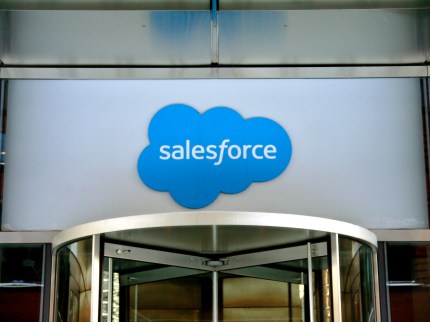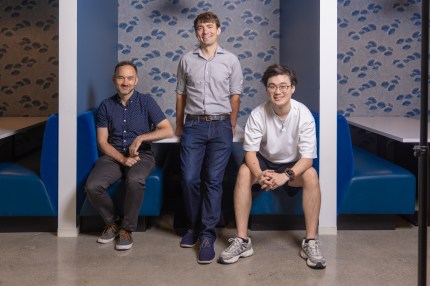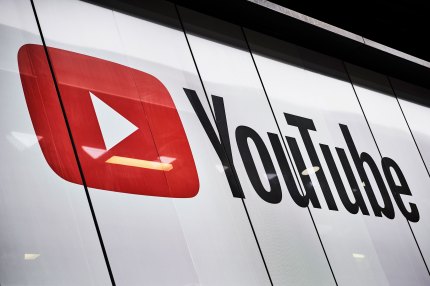The world took a double take at the potential of newsletters after Substack started to blow up a few years ago. Now, another buzzy startup wants to disrupt the disruptor. beehiiv, a(nother) platform for writing, monetizing and distributing newsletters, is today announcing that it has raised $12.5 million, a Series A it will be using to expand its product, bring on more writers and build out its revenues.
Lightspeed Venture Partners is leading this round with Social Leverage, Creator Ventures, Blue Wire Capital, and Contrarian Thinking Capital also participating.
The premise of beehiiv (styled with a lower “b”) is pretty simple: Tyler Denk, the co-founder and CEO, believes that while social media is where writers and other creators may have made their names, email — with its estimated 4.4 billion users overall — remains the most lucrative channel for communicating and building more audience. And putting aside the fact that some of us have inboxes overrun with too much junk, email gives us the tools for more curation, where newsletters can thrive.
So, even with a crowded (and growing) field of existing newsletter services that includes not just traditional players like Mailchimp and newer juggernauts like Substack, there is still a big opportunity in coming up with innovative approaches to do just that, through advertising, paywalls and more.
“It’s very early days for what is a massive opportunity,” Denk told me this week.
Part of his confidence comes from experience. He started the company with Benjamin Hargett and Jake Hurd (pictured above, L to R), and the three initially cut their teeth at Morning Brew, building what else? The media company’s very successful newsletter business.
NYC-based beehiiv was launched in October 2021, and since then, on some $4 million of prior funding, it’s amassed a network of 7,500 active newsletters that collectively have 35 million unique readers and see 350 million monthly impressions. It currently has a revenue run rate of $4 million, with ARR of $3 million, based on monthly fees that it charges its customers (it has three usage tiers currently: free, $42/month, and $84/month). It was profitable on a monthly basis from April 2023 (this latest funding has changed that now).
For some comparison, beehiiv’s most obvious rival, Substack, says it has 35 million ‘active’ subscribers, which includes 2 million paid subscriptions. The latter is the focus of Substack’s newsletter business model: it takes a 10% cut on those subscription revenues. To bring on more of the kind of writers who might lure paid subs, Substack has paid advances to writers and even turned that concept into a product. While Substack remains best known for its newsletters and some of the high-profile writers and writing published on the network, it’s also spun up podcasts, something that looks like a Twitter competitor, and more.
beehiiv is taking a different approach, at least for now. Its focus for the moment continues to be newsletters, rather than other kinds of media formats — although Denk doesn’t rule out newsletters that might, down the road, contain a lot more than just text in them. It won’t be paying any advances to writers. “I don’t see that as sustainable,” Denk simply said when I brought it up.
And it has no plans to take a cut on subscriptions if creators do want to create paywalls. (Stripe fees still apply.) And it’s taking a careful approach to how and if it will create recommendations in the same way for discovery that Substack currently offers. In fact, user growth on the platform, both in terms of its writers as well as those writers’ audiences, is “primarily product and community led,” Denk said. “We didn’t spend a dollar on acquisition for the first 12 months.” Even now he said that around 90% of its monthly growth remains unpaid.
It has a mix today of large newsletter publishers that have grown from the ground up on beehiiv, such as crypto-focused Milk Road and a cluster of AI-focused newsletters; combined with others who have swarmed to beehiiv from other platforms porting their audiences along. Those include Matthew Berry’s Fantasy Life and Daily Drop.
Its biggest product plans seem to be are in areas like advertising, and building what its investors Nicole Quinn and Faraz Fatemi (respectively general partner and partner at Lightspeed) described to me as a programmatic ad network for newsletters.
This is just getting started, Denk tells me. Its nascent efforts launched just six months ago and are currently giving beehiiv a take rate of about $50k/month and growing.
Today, ad content is supplied by advertisers, but down the road Denk said that beehiiv is working on a way of better matching brands and advertisers to newsletter topics, and offering a widening array of formats to insert ads natively, even leveraging AI to learn the “voice” of different authors to tailor content and create more seamless experiences for readers.
There are obvious drawbacks in the world of newsletters, even apart from heavy competition in the market.
Although a number of interesting newsletters have sprung up as alternatives and complements to newspapers, magazines, blogs, podcasts and other online content formats, the mainstay of the format remains marketing-led: updates from e-commerce sites and other businesses that get sent to users, often unsolicited emails (even these days) that can be hard to unsubscribe from. Switching a large base of consumers over to thinking about newsletters as more than this has yet to be achieved.
Another challenge is that even in the world of “quality” newsletters, they run the risk of overrunning themselves. When incisive commentary about world affairs, business world updates, managing life as a working mom, culinary anecdotes about expat life in Paris, tips on books to read, book reviews, tech insights, celeb gossip, arty gossip, and so on and so on all become too numerous and the novelty wears off, will people still open all those newsletter emails?
And given how many of them are one-man-bands, will writers always have enough gas in the tank to write them as regularly?
And there is the question of how to sustain an email-based audience: younger generations already use email significantly less than older ones. Will newsletter content spur a new stream of usage of email, or will the decline of email eventually kill off newsletters?
All of this actually also posed challenges for beehiiv, which faced all this pushback and more when it was first went to talk to would-be investors, Denk said.
“When we initially tried to raise money, Substack was already dominant, but also Twitter had just acquired Revue and Facebook had launched Bulletin,” he recalled, all things investors brought up in meetings. But fast forward to today, the latter two social platforms’ efforts have both totally fizzled out. “The juice was not worth the squeeze,” Denk said. Yes, Substack and the many others remain, but beehiiv has grown anyway, on far less funding.
Now, it seems that the staying power of beehiiv, and of newsletters, and that of email currently, are compelling enough for investors like Lightspeed to take the bet.
“Social networks present a feed but the email inbox gives users a deeper level of control over the content,” Fatemi said. “What email offers is more privacy and control.” (That’s before adtech might take a more prominent role…)
beehiiv specifically, he said, had three key attributes that got Lightspeed interested: the platform that the startup had already built; the numbers and growth around its SaaS and other monetization plans; and the “domain experts” building the product.
“The three founders and their team understand the challenges of the email space because of their Morning Brew days,” he added.
Updated with “beehiiv” styling, and to clarify to the profitability time frame, 7,500 active newsletters, and take rate on ads.































Comment